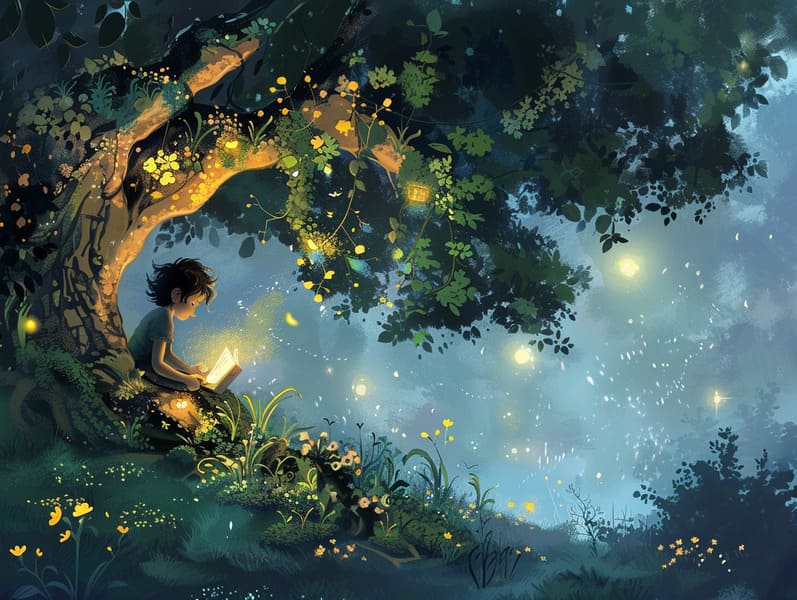The Evolution of Children's Fairy Tales with Their Ageless Charm.
The Evolution of Children's Fairy Tales with Their Ageless Charm.
Blog Article

Traditional fairy tales have long histories. These stories have been passed down from one generation to the next long before they were ever transcribed. They developed from a variety of traditions, including Indigenous traditions. They were initially transmitted among adults, often carrying themes and messages relevant to the societal norms and beliefs of the time.
The famous Grimm duo, Jacob and Wilhelm Grimm, were among the first to compile and release many of these beloved stories. Their collection, "Grimm's Folk Tales," included classics like "Cinder Maid," "Hansel and Gretel," and "Snow-White and Rose-Red," which have since become staples in the world of beloved fairy tales. Similarly, H. C. Andersen's enchanting tales, such as "The Mermaid," and "The Ugly Duckling," have gained the love worldwide, cementing their place in the pantheon of treasured fairy tales.
Though they are old, these stories remain as pertinent as ever, especially as nighttime stories for kids. These delightful tales are now available in various formats, including beautifully illustrated books, captivating animations, and digital fairy tales.
Their enduring popularity can be connected to several enchanting factors:
Moral Lessons: Timeless fairy tales often share important moral lessons. Tales like "The Tale of the Boy Who Cried Wolf" teach the virtue of sincerity, while "The Hare and the Tortoise" stress the merits of perseverance and humbleness. These tales offer young readers clear distinctions between correct and incorrect, shaping their moral compass in a soft yet meaningful way.
Warmth and Understanding: Classic fairy tales frequently present personalities facing challenges and problems, motivating readers to empathize with their struggles and root for their triumphs. For instance, "Beauty and Her Beast" teaches us the virtue of seeing beyond looks to perceive the true character of a character, enhancing kindness and awareness.
Cultural Awareness: Many timeless fairy tales are rich in the cultural contexts from which they bloomed. Discovering these fairy tales can provide captivating looks into different social structures, encouraging a sense of global understanding and respect.
Creativity and Fantasy: The fantastical elements in classic fairy tales—mythical entities—enliven children’s creativity. These tales lead readers to imaginary realms, promoting fantastical thinking and a sense of delight that remains a lifetime.
Timeless fairy tales are not only bewitching but also pedagogical. They work as delightful tools in nurturing various intellectual and emotional capacities in children. When old fairy tales are narrated, they nurture speaking abilities by bringing new language items and complicated sentence structures. This practice also promotes hearing perception and concentration, as the young pay close attention, eager to see what happens next.
Furthermore, examining the themes and characters of old fairy tales can nurture cognitive skills and problem-solving abilities. Young ones learn to pinpoint patterns, forecast, and figure out cause and effect. These deliberations also benefit young readers articulate their thoughts and feelings, fostering their emotional intelligence.
In today’s modern era, the prevalence of online fairy tales has made these stories more attainable than ever. Web platforms and apps supply comprehensive collections of bedtime fairy tales that can be seen or listened on anytime, anywhere. Fairy tales read out loud are particularly favored, offering an enjoyable way for children to enjoy these charming stories. Sound books and spoken videos carry characters and settings to life, often paired with magical musical scores and harmonies that amplify the narrative adventure.
The unfading fascination of traditional fairy tales fairy tales for kids lies in their ability to change to current eras while sustaining their main lessons. Contemporary revisions of these fairy tales often include more varied characters and modern settings, making them familiar to today’s audience. However, the underlying themes of valour, empathy, and fairness remain unchanged, continuing to touch listeners of all ages.
Fairy tales also offer a sense of calm and knownness. They afford a structured narrative with a clear beginning, middle, and end, often wrapping up with the wrap-up of conflicts and the triumph of morality over wickedness. This constancy can be reassuring for young ones, gifting a sense of steadfastness in an unpredictable world.
Traditional fairy tales continue to allure and instruct new generations, maintaining their splendor and pertinence in modern society. As nighttime stories for kids, they make accessible a perfect blend of enchantment and education, promoting moral values, empathy, and creativity. The accessibility of digital fairy tales and the prevalence of fairy tales voiced confirm that these timeless tales remain obtainable to new generations.
By holding onto and sharing these stories, we continue to honor the rich tapestry of tales and cultural heritage. Whether you are browsing a artistically illustrated book, viewing a web-based collection, or listening to an sound book, the captivation of traditional fairy tales is always within reach. These fairy tales convey of the persistent spell of fairy tales and its ability to unite us across epochs and places.
Whether you are reading a colorful picture book, enjoying a internet collection, or listening via an audiobook, the charm of ancient fairy tales is always within reach.
These narratives highlight of the undying effect of tales and its ability to link us across eras and regions, weaving a spell that charms and informs alike.